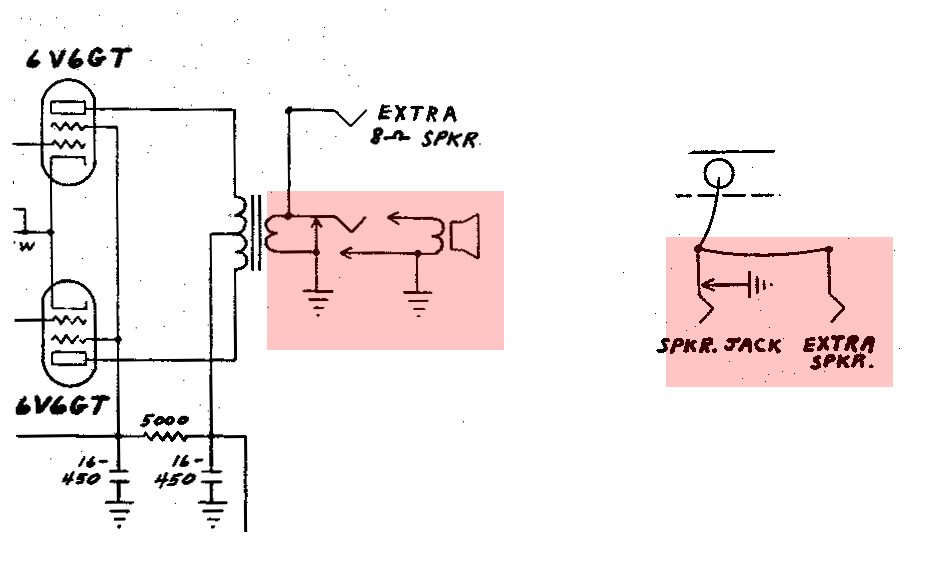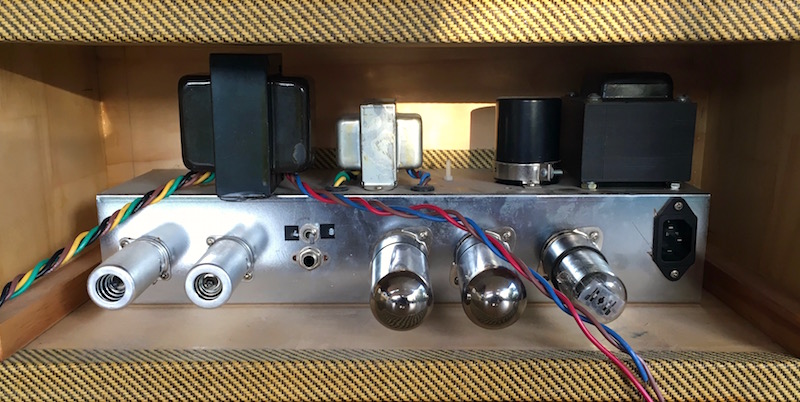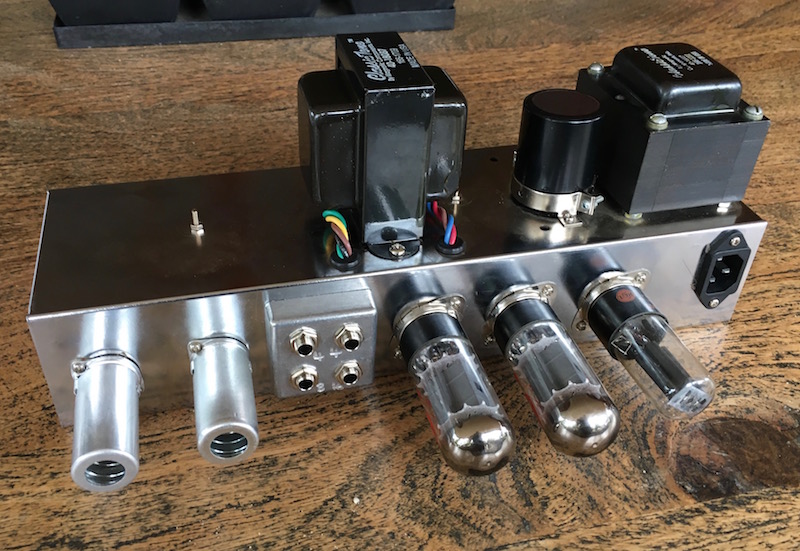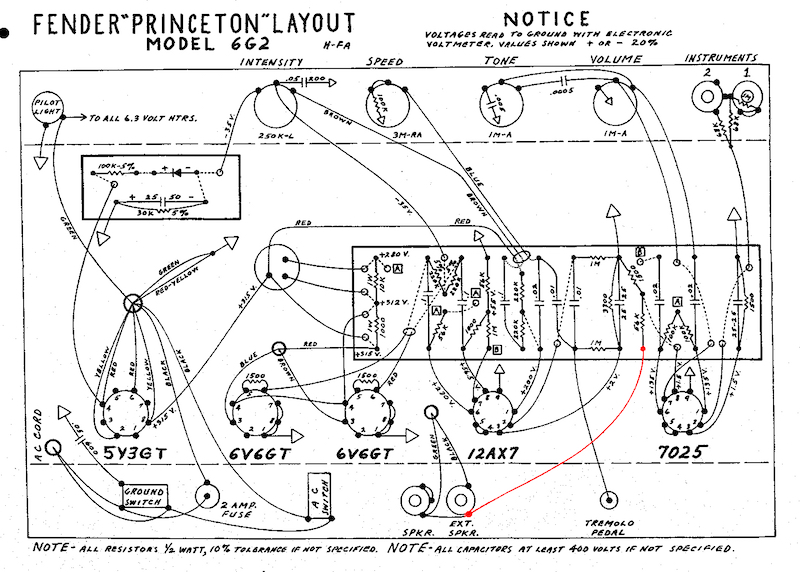Che_Guitarra
Well-known member
I'm about to swap the output transformer on a Fender Princeton style amp I built many years ago. The new OT gives me the options of 4, 8, and 16 ohm taps, it has a primary impedance of 6.6K, and it's an upgrade from 15W to 20W... so my questions:
(1) I need a three-position switch that allows me to select between each of these tap options... would that be a DP3T? And also, switch specs are usually rated in terms of amps and volts... speakers and output transformers talk in the language of ohms and impedance... i'm not completely confident in converting this back to volts and amps... can anyone help me translate how much switch I need?
(2) I'm wanting to expand from one output jack to two, but i've got no idea how to translate these symbols. I'm assuming the 'extra speaker' jack is just a regular mono jack, but I have no idea how to interpret that primary output jack symbol... is it a shorting jack? Perhaps a type of jack i'm unfamiliar with? Hmmm...

I'll be much appreciative for any help you guys can give me
(1) I need a three-position switch that allows me to select between each of these tap options... would that be a DP3T? And also, switch specs are usually rated in terms of amps and volts... speakers and output transformers talk in the language of ohms and impedance... i'm not completely confident in converting this back to volts and amps... can anyone help me translate how much switch I need?
(2) I'm wanting to expand from one output jack to two, but i've got no idea how to translate these symbols. I'm assuming the 'extra speaker' jack is just a regular mono jack, but I have no idea how to interpret that primary output jack symbol... is it a shorting jack? Perhaps a type of jack i'm unfamiliar with? Hmmm...

I'll be much appreciative for any help you guys can give me








